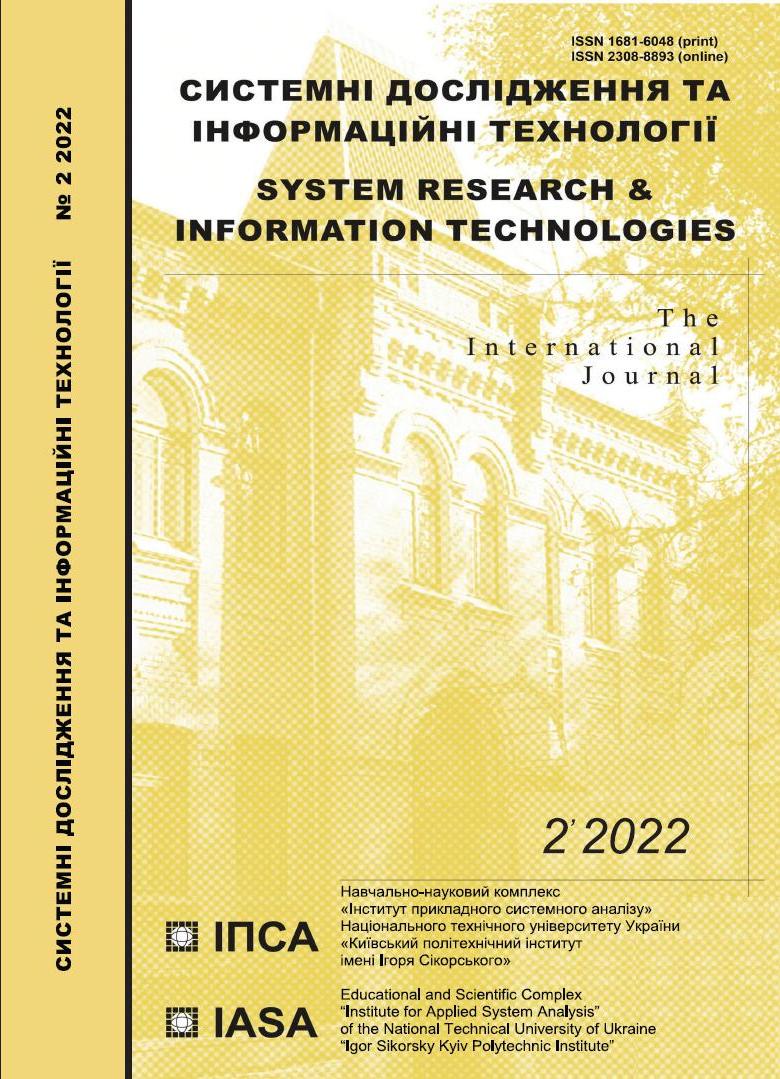Research of autoencoder-based user biometric verification with motion patterns
DOI:
https://doi.org/10.20535/SRIT.2308-8893.2022.2.10Keywords:
motion patterns recognition, biometric verification, recurrent autoencodersAbstract
In the current research, we continue our previous study regarding motion-based user biometric verification, which consumes sensory data. Sensory-based verification systems empower the continuous authentication narrative – as physiological biometric methods mainly based on photo or video input meet a lot of difficulties in implementation. The research aims to analyze how various components of sensor data from an accelerometer affect and contribute to defining the process of unique person motion patterns and understanding how it may express the human behavioral patterns with different activity types. The study used the recurrent long-short-term-memory autoencoder as a baseline model. The choice of model was based on our previous research. The research results have shown that various data components contribute differently to the verification process depending on the type of activity. However, we conclude that a single sensor data source may not be enough for a robust authentication system. The multimodal authentication system should be proposed to utilize and aggregate the input streams from multiple sensors as further research.
References
S. Minaee, A. Abdolrashid, H. Su, M. Bennamoun, and D. Zhang, Biometrics Recognition Using Deep Learning: A Survey. 2021. [Online]. Available: https://arxiv.org/abs/1912.00271. (Accessed on: Feb 15, 2022).
L. Olanrewaju, O. Oyebiyi, S. Misra, R. Maskeliunas, and R. Damasevicius, “Secure ear biometrics using circular kernel principal component analysis, Chebyshev transform hashing and Bose–Chaudhuri–Hocquenghem error-correcting codes”, Signal, Image and Video Processing, vol. 14, no. 5, pp. 847–855, 2020. doi: 10.1007/s11760-019-01609-y.
A. Blázquez-García, A. Conde, U. Mori, and J.A. Lozano, “A Review on Outlier/Anomaly Detection in Time Series Data”, ACM Computing Surveys, vol. 54, no. 3, pp. 1–33, 2021. doi: 10.1145/3444690.
M. Braei and S. Wagner, Anomaly Detection in Univariate Time-series: A Survey on the State-of-the-Art. 2020. [Online]. Available: https://arxiv.org/abs/2004.00433. (Accessed on: Feb 15, 2022).
M. Braei, “Anomaly detection of time series: A comparison of statistical vs classical machine learning vs deep learning approaches”, Unpublished, 2019. doi: 10.13140/RG.2.2.17687.80801.
S. Gopali, F. Abri, S. Siami-Namini, and A. Namin, “A Comparative Study of Detecting Anomalies in Time Series Data Using LSTM and TCN Models”, arXiv.org, 2021. [Online]. Available: https://arxiv.org/abs/2112.09293. (Accessed on Feb 15, 2022).
S. Mekruksavanich and A. Jitpattanakul, “Deep Learning Approaches for Continuous Authentication Based on Activity Patterns Using Mobile Sensing”, Sensors, vol. 21, no. 22, pp. 7519, 2021. doi: 10.3390/s21227519.
M. Havrylovych, V. Danylov, and A. Gozhyj, “Comparative Analysis of using Recurrent Autoencoders for User Biometric Verification with Wearable Accelerometer”, Proceedings of the 9th International Conference “Information Control Systems & Technologies”, pp. 358–370, Sept. 2020.
P. Casale, O. Pujol, and P. Radeva, “Personalization and user verification in wearable systems using biometric walking patterns”, Personal and Ubiquitous Computing, vol. 16, no. 5, pp. 563–580, 2011. doi: 10.1007/s00779-011-0415-z.
M. Abuhamad, A. Abusnaina, D. Nyang, and D. Mohaisen, “Sensor-Based Continuous Authentication of Smartphones’ Users Using Behavioral Biometrics: A Contemporary Survey”, IEEE Internet of Things Journal, vol. 8, no. 1, pp. 65–84, 2021. doi: 10.1109/jiot.2020.3020076.
Z. Akhtar, A. Buriro, B. Crispo, and T.H. Falk, “Multimodal smartphone user authentication using touchstroke, phone-movement and face patterns”, 2017 IEEE Global Conference on Signal and Information Processing (GlobalSIP), 2017. doi: 10.1109/globalsip.2017.8309185.
C.A. Cole, D. Anshari, V. Lambert, J.F. Thrasher, and H. Valafar, “Detecting Smoking Events Using Accelerometer Data Collected Via Smartwatch Technology: Validation Study”, JMIR mHealth and uHealth, vol. 5, no. 12, pp. e189, 2017. doi: 10.2196/mhealth.9035.
A. Mostafa, T. Barghash, A. Assaf, and W. Gomaa, “Multi-sensor Gait Analysis for Gender Recognition”, Proceedings of the 17th International Conference on Informatics in Control, Automation and Robotics, 2020. doi: 10.5220/0009792006290636.
I. Goodfellow, Y. Bengio, and A. Courville, Deep Learning Adaptive Computation and Machine Learning series. 2016. 775 p.
H. Sak, A. Senior, and F. Beaufays, “Long short-term memory recurrent neural network architectures for large scale acoustic modeling”, Interspeech 2014, 2014. doi: 10.21437/interspeech.2014-80.
UCI machine learning repository. [Online]. Available: https://archive.ics.uci.edu/ml/datasets/Activity+Recognition+from+Single+Chest-Mounted+Accelerometer. (Accessed on: Feb 15, 2022).
F. Chollet, Building Autoencoders in Keras. 2016. [Online]. Available: https://blog.keras.io/building-autoencoders-in-keras.html. (Accessed on: Feb 15, 2022).
Getting Raw Accelerometer Events. [Online]. Available: https://developer.apple.com/documentation/coremotion/getting_raw_accelerometer_events
S. Sugrim, C. Liu, M. McLean, and J. Lindqvist, “Robust Performance Metrics for Authentication Systems”, Proceedings 2019 Network and Distributed System Security Symposium, 2019. doi: 10.14722/ndss.2019.23351.
Y. Hong and R. Kumar, Performance Evaluation Metrics for Biometrics-based Authentication Systems. 2021. [Online]. Available: http://hdl.handle.net/10066/23535. (Accessed on: Feb 15, 2022).

